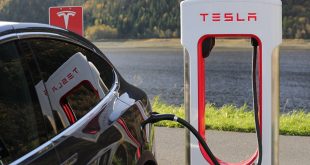Toyota electric cars are ahead of the curve most of the time. Now is no exception. Let’s take a look at the history of the Prius.
Over ten years ago auto makers were subjected to market pressures that basically killed the electric car movement. If you need more information on that, see the “Who Killed the Electric Car” video documentary.
After the EV battle was lost, there was some interesting fallout. Japanese auto makers were forced to abdicate their expertise and finally production of full EV Ni-MH battery packs. This is evidenced by the sudden end of production of the Toyota RAV4 EV. The SUV still today, ten years later, commonly sells for $20,000 – $30,000! That is how incredibly well the vehicle was built.
Toyota however made a genius move. It produced the Toyota Prius Hybrid. This worked in several ways.
First, Toyota could leverage their battery expertise. The new Prius still uses a 1.6 kWh Nickel Metal Hydride battery similar to the one installed in 2004. The company has manufactured literally millions of these packs. There’s your profit margin.
Second, the size of battery pack is optimal. Batteries are expensive. So, they kept the battery pack small. If you notice that a Prius size car might use up say 200 watt hours per mile. 1.6 kWh is 1600 watt hours. The car is going to go 1600/200 = 8 miles max on battery power. If you want to power the car on battery power only, you need a much larger and more expensive battery.
Toyota cut the battery size and cost to the quick. Since the resulting car still used gasoline, this kept the oil companies from further legal actions. It allowed Toyota to maintain a hand in EV manufacture and expertise and at the same time lowered the cost of the resulting car a whole lot. The company can still claim green, customers can feel all eco, and many cars are sold. This is sheer genius, marketing Aikido.
The next generation of Toyota electric cars remains to be seen. At auto shows in the past couple of years the company has been rolling out a futuristic looking drive by wire rig called the FT EV. This style of the car has been described as “Steampunk”.
Production of the Ft-EV has been stated as 2012. However, very few specifications beyond a range of about 55 miles and speed of 60mph/100kph are available. It makes one wonder how serious Toyota is about producing the car.
Finally we see that Toyota may be working on electric car technology that could revolutionize the market if they are correct.
The company claims it may well be able to effectively produce a Hydrogen powered EV for $50,000 USD by the year 2015. If this is true, and Lithium battery technology has not improved 4 or 5 fold in energy density/storage by that time, Toyota may once again be making millions of vehicles nobody saw coming.
 Alternative Energy HQ solar power for homes, wind energy, and bio fuel issues
Alternative Energy HQ solar power for homes, wind energy, and bio fuel issues







